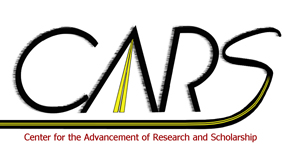A Multidisciplinary Lens
Location
Hart 114
Start Time
14-5-2014 11:05 AM
End Time
14-5-2014 12:05 PM
Description
The Limits of Conscientious Objection in Medicine
Dr. Gal Kober
My paper examines the possible limits of freedom of conscience in medical and pharmaceutical practice. Conscientious objection is a fundamental right in a democracy; in the US, nearly all states offer some legal protection for medical professionals who wish to avoid certain practices that clash with their moral or religious convictions. However, this right is not unlimited; the law extends these protections only to some practices, and sets restrictions beyond which objection is not acceptable. In the context of medical and pharmaceutical practice the issue comes up most sharply in relation to reproductive health. I evaluate the limits of conscientious objection by pharmacists and physicians in cases involving the morning-after pill (‘Plan-B’). I argue that, while freedom of conscience affords the right to refuse, a fiduciary responsibility is implied within the bounds of voluntarily assumed professional duties, and thus one’s moral autonomy may be justly restricted.
Oxford Bibliographies Online:-The Six Systems of Hindu Philosophy
Dr. Matthew Dasti
This will be a presentation of my peer-reviewed annotated bibliography on the six systems of Hindu philosophy while also introducing the audience to the Oxford Bibliographies Online as a scholarly resource.
Which Galaxies are Making Stars? Star Formation in Three Super-Clusters of Galaxies
Dr. Thomas Kling
Stars form when enough hydrogen gas accumulates in a given region in a galaxy to attract gravitationally, heat up, and begin a process of nuclear fusion. Part of my research program is to determine which galaxies make stars and why. I will report of progress from my 2013 Summer Grant, where I analyzed 3 ½ nights of observations using the Mayall 4-m telescope at Kitt Peak in Arizona of three different clusters in four filter bands. My raw data is over 450 individual exposures from a 121 megapixel camera attached to a lens that is 4-m is size. The number of exposures allows one to measure very faint galaxies (~23rd magnitude), much dimmer than the human eye can see (~7th magnitude), without saturating the camera.
A Multidisciplinary Lens
Hart 114
The Limits of Conscientious Objection in Medicine
Dr. Gal Kober
My paper examines the possible limits of freedom of conscience in medical and pharmaceutical practice. Conscientious objection is a fundamental right in a democracy; in the US, nearly all states offer some legal protection for medical professionals who wish to avoid certain practices that clash with their moral or religious convictions. However, this right is not unlimited; the law extends these protections only to some practices, and sets restrictions beyond which objection is not acceptable. In the context of medical and pharmaceutical practice the issue comes up most sharply in relation to reproductive health. I evaluate the limits of conscientious objection by pharmacists and physicians in cases involving the morning-after pill (‘Plan-B’). I argue that, while freedom of conscience affords the right to refuse, a fiduciary responsibility is implied within the bounds of voluntarily assumed professional duties, and thus one’s moral autonomy may be justly restricted.
Oxford Bibliographies Online:-The Six Systems of Hindu Philosophy
Dr. Matthew Dasti
This will be a presentation of my peer-reviewed annotated bibliography on the six systems of Hindu philosophy while also introducing the audience to the Oxford Bibliographies Online as a scholarly resource.
Which Galaxies are Making Stars? Star Formation in Three Super-Clusters of Galaxies
Dr. Thomas Kling
Stars form when enough hydrogen gas accumulates in a given region in a galaxy to attract gravitationally, heat up, and begin a process of nuclear fusion. Part of my research program is to determine which galaxies make stars and why. I will report of progress from my 2013 Summer Grant, where I analyzed 3 ½ nights of observations using the Mayall 4-m telescope at Kitt Peak in Arizona of three different clusters in four filter bands. My raw data is over 450 individual exposures from a 121 megapixel camera attached to a lens that is 4-m is size. The number of exposures allows one to measure very faint galaxies (~23rd magnitude), much dimmer than the human eye can see (~7th magnitude), without saturating the camera.

Comments
Moderator: Mr. Eric LePage